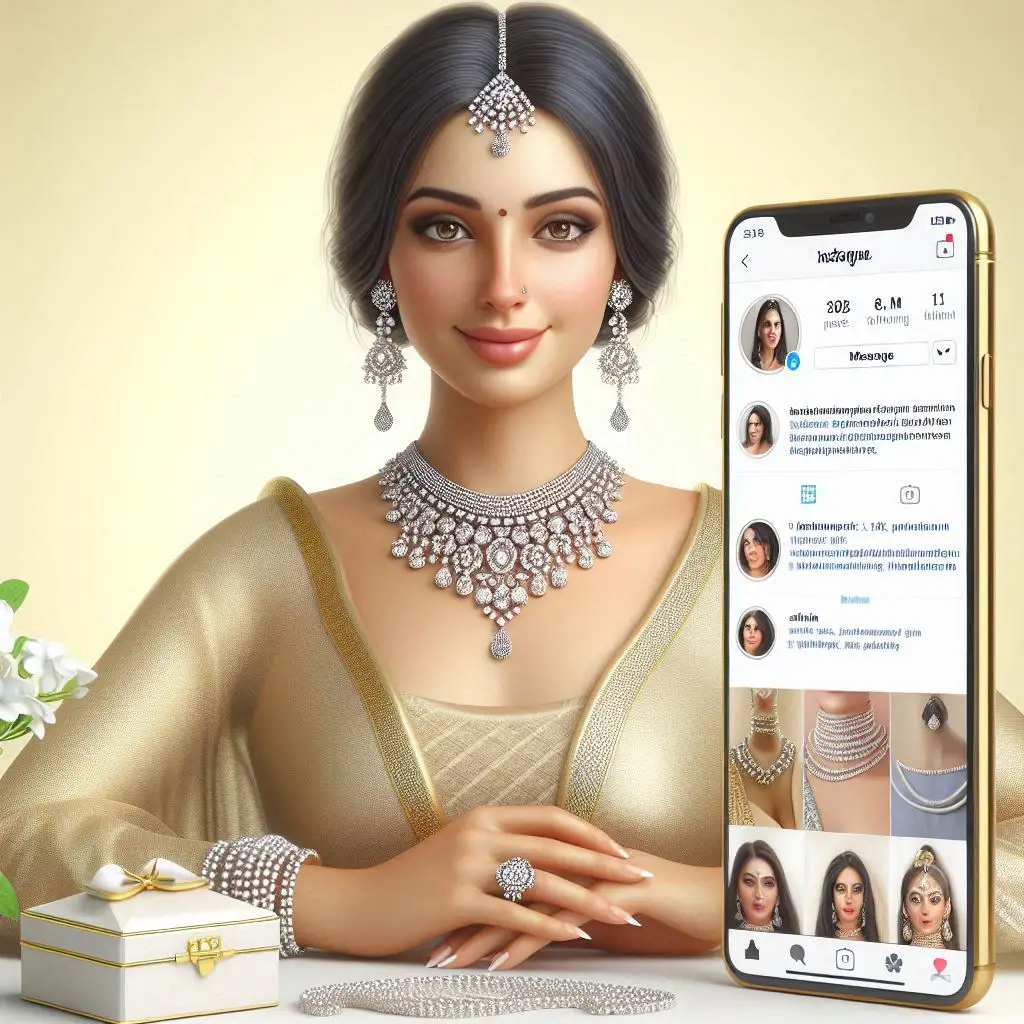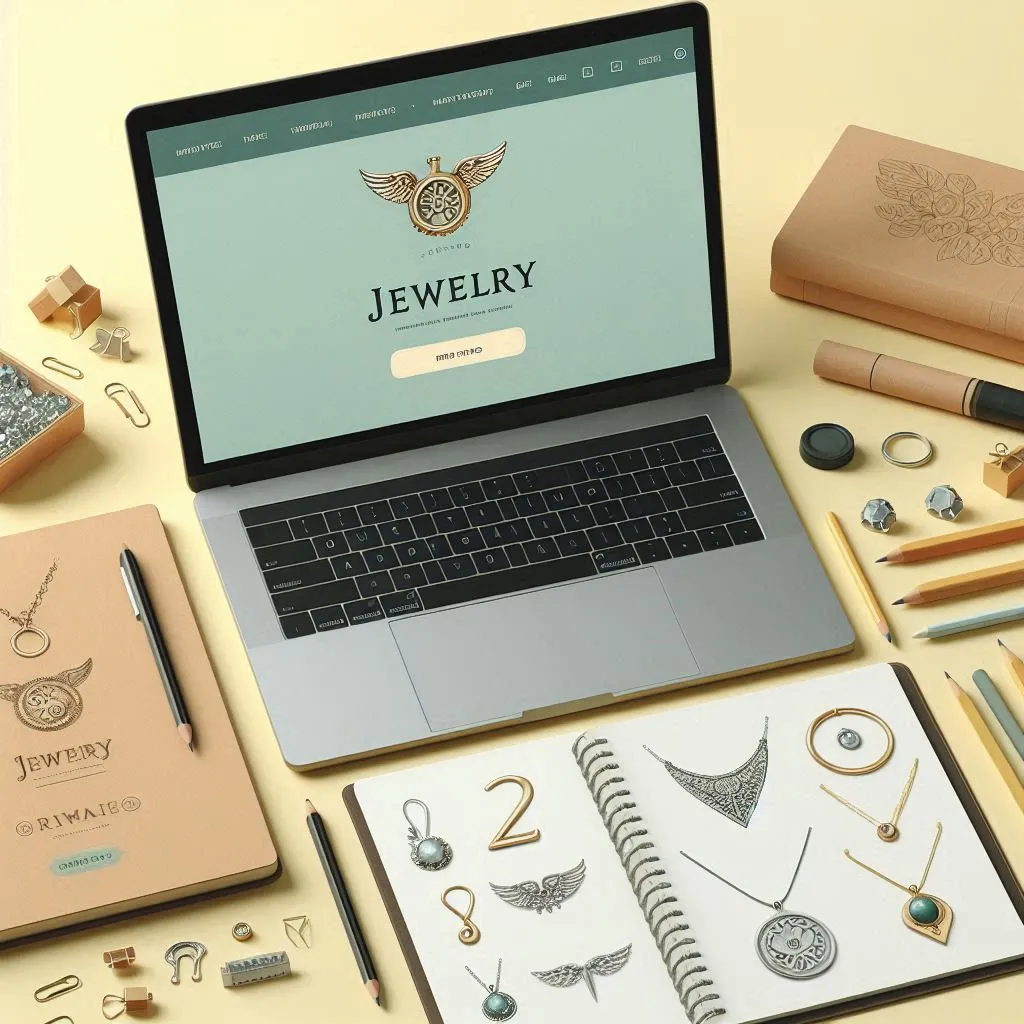
We get it. With so many international and national jewellery brands out there, like Swarovski, Tiffany & Co. and Kalyan Jewellers, it’s easy to get lost in all the glitter. Figuring out how to brand your own jewellery can be tough. But don’t worry, we are here. We are a digital marketing agency for jewellery and in this blog, we will talk about how to brand your jewellery business. This guide will help you stand out among the big names. You will find top strategies and learn about brand identity and Jewellery advertisement.
Table of Contents
- What is Jewellery Branding?
- Research Market Trends
- Top 5 Strategies for Jewellery Branding
- Current Successful Brands in Jewellery Marketing
- In Conclusion
- Frequently Asked Questions
What is jewellery branding?

Whether you are a budding artisan or an established jeweller, redefining your presence and branding your jewellery business is essential. This becomes even more crucial in today’s digital world, where people look up jewellery brands on platforms like Instagram to see their content and designs.
We often hear the saying, “Never judge a book by its cover,” yet as humans, we tend to do so. This is where jewellery branding comes in. Your brand is your book cover.
Jewellery branding goes beyond the mere aesthetics of your pieces. It is about creating a unique identity for your brand that resonates with and is remembered by your target audience. Even among hundreds of competitors, there are one or two factors that should make your brand stand out. Jewellery branding defines how a brand presents itself to the world.
Jewellery branding includes several key elements:
- Defining your target audience
- Establishing your brand’s vision and values
- Choosing your colour palette
- Designing your logo
- Defining your brand’s tone of voice
- Creating a brand guidelines document
- Crafting your brand story
- Developing a branding strategy
- Launching your brand online and offline
- Ensuring consistent branding across all marketing materials
Jewellery branding is more than just a logo; it’s about crafting a compelling narrative and emotional connection with customers.
Research Market Trends
Before you start branding your jewellery, it’s important to research market trends.
Thorough market research is crucial. It helps jewellery brands like yours adapt to what customers want, understand competition, and stay updated with industry changes, making your products better.
By following trends, brands can meet customer expectations, stand out from competitors and make smart decisions about products, prices and advertising.
Knowing trends also helps you predict what customers will want next and stay competitive. In the jewellery business, where designs and customer preferences are important, doing good market research is key. It helps brands handle challenges, use good opportunities and make a unique place in the market.
For any jewellery marketing agency, using these ideas is really important to help clients grow and stay important in the market.
Top 5 Strategies for Jewellery Branding
The tone is set, the basics are learnt, let’s now get into the main part. Strategies for jewellery branding. Here are top 5
1. Set the aim of your jewellery brand
Without a goal or an aim, your brand will be directionless and unsure of where to move forward. The aim of your jewellery brand should capture its essence and purpose. What does your brand stand for, and what is the aim of your jewellery brand? Is it to increase sales, establish recall value, or create a memorable online identity? Define the aim of your brand and start working consistently towards fulfilling it across all platforms.
2. Define your target audience
Identify your target audience based on demographics, lifestyle, and purchasing behaviour. Are you catering to luxury seekers like Tiffany & Co., or fashion-forward individuals akin to Swarovski’s audience? Understanding your audience informs your brand’s tone, aesthetics, and marketing strategy. A deep understanding of your target audience will help you craft an effective jewellery brand strategy.
3. Create memorable logos and taglines
Create a logo and jewellery brand identity that reflects your brand’s personality and resonates with your target audience. Whether it’s a minimalist symbol or an ornate design, ensure it’s versatile enough to be used across different mediums while maintaining its distinctiveness. The recall value of any logo or brand is crucial, especially when catering to the Indian audience, as buying jewellery is often an emotional moment. Having a creative tagline or logo can directly appeal to the emotions of your buyers.
4. Storytelling
Jewellery brands use storytelling to blend craftsmanship with personal expression, creating pieces that deeply resonate with customers. Each piece carries its own story—inspired by history, crafted with skill and reflecting the wearer’s dreams.
These brands often draw from cultural narratives or historical symbols to add meaning. For example, a goddess design necklace may convey power and divinity while a ring with intertwined hearts symbolises eternal love.
Modern consumers value brands that align with their values, including transparency and sustainability. Brands integrating these elements not only connect emotionally but also build trust and loyalty.
5. Utilise Social Media
In today’s world, social media is vital for branding and building a jewellery brand. Focus on showcasing products and connecting with your community. Partnering with a social media marketing company can help you leverage platforms like Instagram, Pinterest and Facebook to highlight your jewellery’s beauty and craftsmanship. Use high-quality images, collaborate with influencers and encourage user-generated content to boost brand awareness and engage with your audience directly.
Current Successful Brands in Jewellery Marketing
Two globally renowned jewellery brands celebrated for their effective marketing strategies are Tiffany & Co. and Pandora. Tiffany & Co. has capitalised on its iconic blue box and rich heritage to establish a prestigious image centred on luxury and craftsmanship. Leveraging social media, particularly Instagram, Tiffany has significantly boosted brand visibility and engagement, amassing 16.2 million global followers.
Similarly, Pandora has excelled in accessible luxury with its customisable jewelry and charm bracelets, targeting a wide demographic through compelling storytelling and digital campaigns. Their robust social media presence, boasting over 10.7 million Instagram followers, showcases a diverse range of products and community involvement.
In India, Tanishq and Kalyan Jewellers stand out as prime examples of effective marketing in the jewellery industry. Tanishq, a Tata Group brand, has positioned itself as a trusted name synonymous with craftsmanship and innovation. Their marketing campaigns celebrate cultural diversity and traditional artistry, resonating deeply with Indian consumers. Kalyan Jewellers, renowned for its expansive retail network and celebrity endorsements, successfully blends traditional values with contemporary marketing strategies. Their focus on regional markets and festive campaigns has increased their brand presence across India.
These brands exemplify how effective jewellery branding, strategic marketing, and digital engagement can drive success in global and Indian markets. They cater to diverse consumer preferences while building enduring brand loyalty, making them prime examples for any jewellery branding agency to study and learn from.
In Conclusion
Effective jewellery branding involves creating an identity that captivates the hearts and minds of your audience. By defining your brand’s purpose, understanding your audience and crafting memorable visuals, you can carve out a unique space in the competitive jewellery market.
Establishing a jewellery brand requires strategic planning and creativity. If you need experts by your side, our digital marketing company is here to help. Contact us at hello@florafountain.com and we will help you define your brand’s unique identity and make a lasting impression in the glittering world of the jewellery industry.



